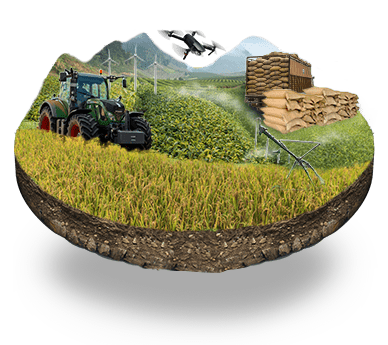Traceability is the ability to delineate the history, application, and location of a product. Timber Traceability systems are an essential initiative to ensure sustainability in helping achieve several objectives, including formalizing the forest sector, increasing the collection of taxes and royalties by governments, suppressing illegal timber markets, and supporting law enforcement. Timber traceability systems provide a mechanism to help verify the sources of raw materials, as well as the legal, environmental, and social claims associated with a product. During the last decade, a wide array of Timber traceability - Management Tools for Government systems have been developed in timber-producing countries. As the trend towards traceability continues, it is important to document lessons and best practices as a reference for government officials in other countries who are interested in pursuing this path in the future. This growing interest reflects, in part, an increase in demand for products of legal origin from international markets. The Global Timber & Wood Product Market size was estimated at $625.99 billion in 2022 and is projected to grow at a CAGR of 6.11 per cent to reach $844.30 billion by 2027. (Source: Business Wire)
Illegal logging threatens the sustainable development of the forestry sector. By using technology to enhance forest management, you will be able to trace, track and certify timber as it grows. Illegal logging deprives governments of billions of dollars in tax revenue and causes massive environmental damage. Logging-related corruption undermines the rule of law, discouraging legitimate investment and hindering development.
Developing and rolling out a timber traceability system can be challenging. Timber supply chains are complex in nature, but traceability systems often also involve changes in approaches, operations management, and logistics that require significant financial and labor investments. For this reason, system implementers often face resistance from the sector and capacity gaps.
Timber supply chains are intricate webs of processes, making it challenging to establish effective traceability systems. Such systems often demand changes in approaches, operations management, and logistics, which in turn require substantial investments of both money and labor. On top of that, those responsible for implementing these systems often encounter opposition from the industry itself and face gaps in their own capabilities. To overcome these hurdles, forest authorities need strong support from top-level politicians who recognize the importance of timber traceability. They also require a robust legal and regulatory framework to ensure compliance and enforcement. Additionally, financial and technical assistance is crucial to successfully developing and implement traceability systems
Timber traceability is a major trend on a global scale: companies are implementing traceability systems in their operations, convinced as they are of their value as an operations management tool. However, not all enterprises embrace traceability as an operation management tool, and implementation of and compliance with traceability systems are often considered to be a significant administrative and financial burden.
An increasing number of governments in tropical timber-producing countries around the world have developed and implemented national timber traceability systems for different reasons, including:
• Exercise more control over the timber sector, including maximizing government revenue based on timber-related fees, taxes, and sales.
• Increase monitoring and control over the management of forest resources
• Combat illegal logging and associated trade practices
• Support private-sector response in addressing global market demands for evidence of legal timber
• Document the legality of timber products to show they fulfil international commitments that require proof of legal origin
Benefits:
For The Private Sector
• Improved quality control
• Streamlined processes
• Business optimization, which can increase business competitiveness.
• Enable operations to comply with legality requirements and demonstrate compliance and proof of legal origin for raw materials.
This can increase access to regulated markets, which are sensitive to sourcing illegal or controversial timber.
For The Government Sector,
• Traceability systems are important tools to verify that raw materials used in wood products were sourced from legal, responsible, and non-controversial sources.
• It improves efficiency and reduces bureaucracy, as well as provides more ways of controlling product quality.
• When traceability systems are connected to pre-harvesting field activities and inspections, they can be used to support more sustainable forest management.















